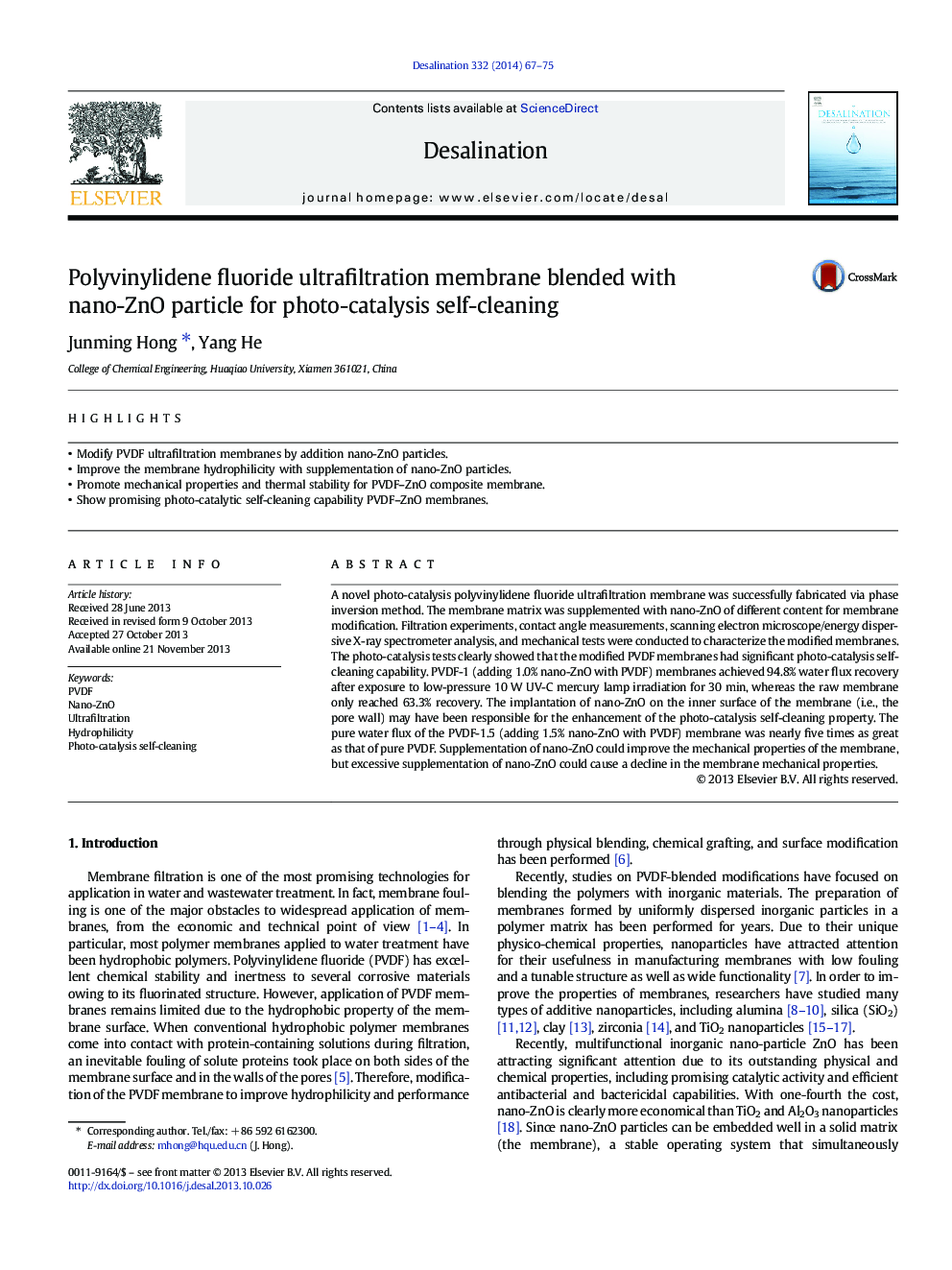| Article ID | Journal | Published Year | Pages | File Type |
|---|---|---|---|---|
| 623575 | Desalination | 2014 | 9 Pages |
•Modify PVDF ultrafiltration membranes by addition nano-ZnO particles.•Improve the membrane hydrophilicity with supplementation of nano-ZnO particles.•Promote mechanical properties and thermal stability for PVDF–ZnO composite membrane.•Show promising photo-catalytic self-cleaning capability PVDF–ZnO membranes.
A novel photo-catalysis polyvinylidene fluoride ultrafiltration membrane was successfully fabricated via phase inversion method. The membrane matrix was supplemented with nano-ZnO of different content for membrane modification. Filtration experiments, contact angle measurements, scanning electron microscope/energy dispersive X-ray spectrometer analysis, and mechanical tests were conducted to characterize the modified membranes. The photo-catalysis tests clearly showed that the modified PVDF membranes had significant photo-catalysis self-cleaning capability. PVDF-1 (adding 1.0% nano-ZnO with PVDF) membranes achieved 94.8% water flux recovery after exposure to low-pressure 10 W UV-C mercury lamp irradiation for 30 min, whereas the raw membrane only reached 63.3% recovery. The implantation of nano-ZnO on the inner surface of the membrane (i.e., the pore wall) may have been responsible for the enhancement of the photo-catalysis self-cleaning property. The pure water flux of the PVDF-1.5 (adding 1.5% nano-ZnO with PVDF) membrane was nearly five times as great as that of pure PVDF. Supplementation of nano-ZnO could improve the mechanical properties of the membrane, but excessive supplementation of nano-ZnO could cause a decline in the membrane mechanical properties.
